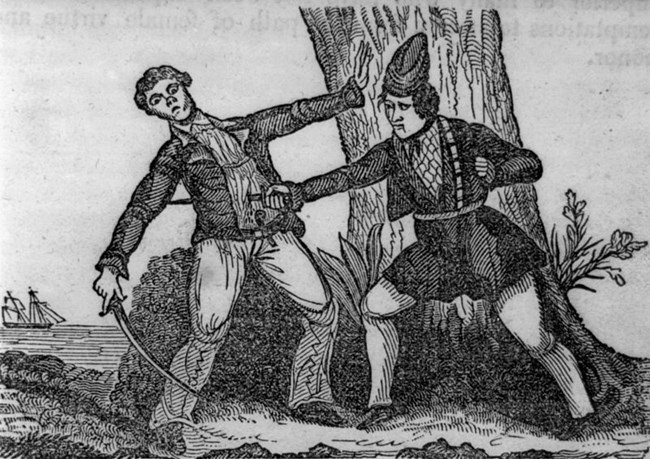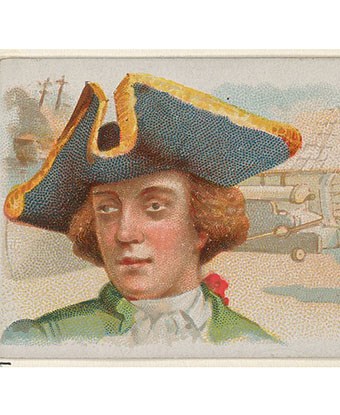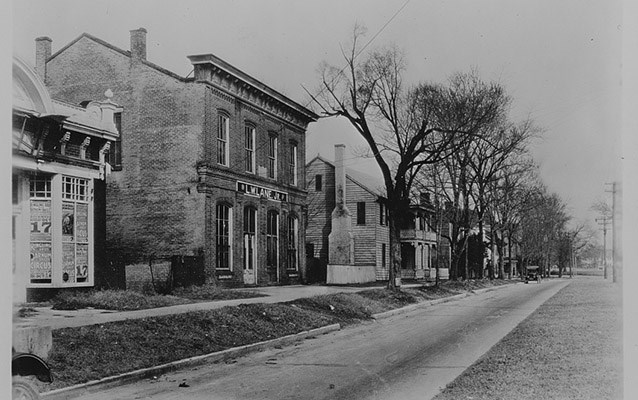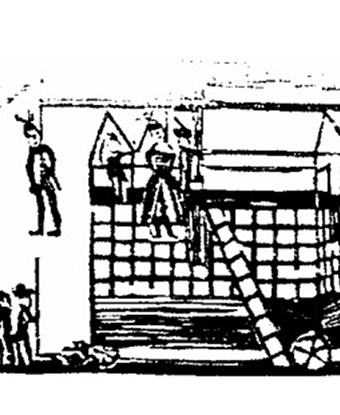Last updated: August 28, 2018
Article
Did You Know: The US has a history of women pirates?

Art work from "Pirates Own Book," 1842. From the collection of the Library of Congress (http://loc.gov/pictures/resource/cph.3a00980/)
The years from the 1650s through the late 1720s has been described as the “Golden Age of Piracy.” Much of the piracy during this period was associated with the colonization of the Americas, the African slave trade, and Asian trade routes. The Caribbean and the seaboard of North America were very active.
Pirates came from countries including Spain, England, France, the Netherlands, and the Americas. They were also called buccaneers and privateers, and sometimes were granted license (called a letter of marque or commission) to attack and steal from vessels of rival countries.
Some pirates made enough money to retire from piracy and become wealthy merchants. Others were captured and tried. The punishment for a conviction of piracy for captain and crew was death.
Three women-turned-pirates with connections to the United States are Anne Bonny, Mary Critchett, and Rachel Wall.

Anne Bonny
Anne Bonny was born in Ireland but raised in the early 1700s in Charles Town (Charleston), South Carolina by her father and his mistress (Anne’s mother; her father’s wife stayed in Ireland). Against her father’s wishes, she married small-time pirate James Bonny. In response, her father disowned her.
Anne and James moved to the Bahamas, a sanctuary for English pirates. James eventually turned informant to the governor, turning in many of his former comrades. Anne spent time in the taverns with other pirates and fell in love with John “Calico Jack” Rackham, pirate captain of the REVENGE. Anne joined Calico Jack as part of his pirate crew. They were active until they were captured in 1720 and sentenced in Jamaica to be hanged for piracy. Anne was pregnant, and her punishment was postponed until she gave birth. We don’t know what happened to her after the delay; some say she was hanged, others that she returned to Charleston, South Carolina.

Mary Critchett
Mary Critchett was one of six convicts sent from England to Virginia to work off their criminal sentences. In the middle of the night of May 12, 1729 Mary and the other prisoners escaped. They boarded the vessel JOHN AND ELIZABETH, overpowered the crew, and confined them to the hold of the ship. With Mary sitting on the hatch to prevent their escape, the prisoner crew – now pirates, since they stole a vessel – sailed into Chesapeake Bay. They were captured shortly afterwards, and Mary and her compatriots were tried in Williamsburg, Virginia. Convicted of piracy, they were sentenced to hang.

Rachel Wall
Rachel Wall was born in Carlisle, Pennsylvania about 1760. Drawn to the sea, she left home at 16 years old. She met George Wall, a fisherman, and with him traveled to Philadelphia, New York City, and Boston. After disappearing for a time, George returned in 1781, and convinced Rachel to join him as a pirate. After stealing a ship, they targeted vessels up and down the New Hampshire coast. They would pretend they were in distress, with Rachel calling to nearby vessels for help. When they approached to render aid, they would be robbed.
In 1782, George and many of the crew drowned when their vessel was wrecked. Rachel survived, and continued a career in robbing vessels. She targeted vessels docked in Boston Harbor, sneaking aboard in the night and stealing from the sleeping crew. In 1789, she was accused of stealing a bonnet and other articles from a woman walking down the street. Rachel denied the theft, but admitted to several acts of piracy. She was hanged in Boston Common on October 8, 1789.
